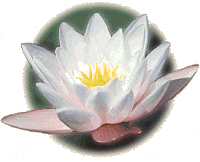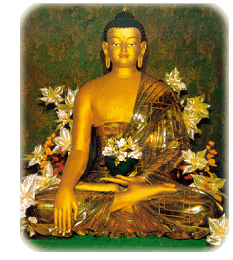

I have had an interest in Buddhism for a number of years but i have recently decided to take it more seriously.I have joined the The New Kadampa Tradition here in the UK. The New Kadampa Tradition (NKT) is a Kadampa tradition of Mahayana Buddhism. It was founded by the contemporary Buddhist Master, Geshe Kelsang Gyatso, in order to preserve and make available in a modern context the teachings of Buddha, as transmitted through the lineage of the Indian Buddhist Master Atisha and the Tibetan Buddhist Master Je Tsongkhapa.
I hope you find this page useful in giving you more information on Buddhism.
Feel free to contact me for more information on the NKT in the UK.
Buddhism

Links to the Web Sites
The New Kadampa Tradition (NKT) is a Mahayana Buddhist organization
E s s e n t i a l s o f B u d d h i s m
An Overview of Buddhism
BUDDHISM IN AMERICA By DAVID VAN BIEMA
Meditation and Mental Culture
Buddhist links
Mahayana - Buddhism - Net Links
Buddhism - Definitive Collection of Net Links
Tharpa Publication Website - Intro
Mind In Buddhism
BuddhaNet - Buddhist Information Network.
Insight Meditation Online
Buddhism--A Brief Introduction for Westerners by Gerald Grow
The Worldwide Online Meditation CenterNon Buddhist and Buddhist meditation
Guide to Meditation
My Home Page
The Birth of Shakyamuni
In history, the Buddha, of course, refers to Shakyamuni Buddha. He was not the almighty god by imagination. He was a lovely baby born around 565 B.C. in Lumbini Park in the city of Kapilavastu in the ancient northern India, today's Nepal. His name was Gotama Siddhattha, which means "he who has accomplished his aim".
Since King Suddhodana had long awaited a child, he and everyone else in the palace rejoiced at the birth of a son. The King immediately called a famous wise sage, Asita. Asita told the king, "If he remains at home, the child will become the Wheel-rolling King. If he leaves home, he will become the great teacher, the Buddha."
It was unfortunate that Maya died on the seventh day after her delivery and Maya's sister, Mahapajapati became the step mother of Siddhattha. The prince grew up in an environment of care and love, respect and joy. However, he was sometimes unhappy.
At the age of seven, the prince began to study science and technology, art and philosophy, and of course, religious knowledge under the tuition of famous scholars. He also learnt riding, archery, fencing, etc.
The prince was outstanding in all intellectual and physical subjects. Putting faith in the forecast of the sage Asita, his father expected much from his son and made him crown prince and heir apparent. But this did not please the young man, who steadily grew to be thoughtful and sad.
To cheer him up, his worried father and foster mother built three palaces, one for cold weather, one for hot weather, and one for the rainy season. They appointed many beautiful court ladies to wait on him and arranged banquets with dancing and music. Furthermore, they encouraged him to marry the lovely princess Yasodhara. Later, Siddhattha got a son called Rahula.
From a prince to a Samana
Hoping to give his son pleasure, King Suddhodana arranged four trips outside the city of Kapilavastu, one through each of its four gates. On three occasions, Siddhattha encountered distressing scenes: an aging man, a sick man and a corpse. Finally, he met a calm, serene ascetic monk, who inspired Siddhattha to have same kind of life.
Whether the story of these trips is true or not is not significant, the four gates represent the state of mind of the prince with respect to the suffering of aging, illness and death. Superficial prosperity in economy and relative stability in political environment cannot relieve people from worry, fear, anxiety and suffering and cannot lead them to ultimate happiness.
With his great compassion, the enthusiastic prince decided to give up his worldly glory and desire, and leave home. He would devote himself to search for the ultimate truth.
Though his love to his family may have hindered him, the birth of his son, Rahula, provided a favourable occasion for his departure since with the birth of his son, Siddattha had fulfilled his duty to his father and his wife according to the Indian tradition. Departing from the palace and the wearing coarse clothes, the prince chose to become a Samana.
From a Samana to an Enlightened One
Siddhatha went to Rajagaha, the capital of Magadha, which was the centre of culture with many orthodox and unorthodox monks. By that time, the two major disciplines for the sake of enlightenment were meditation and ascetic austeritics.
Siddhattha practised meditation under two famous teachers, Alara-Kalama and Uddaka-Ramaputta. The state attained by Alara-Kalama was that of a much higher formless world where matter no longer exists. Uddaka-Ramaputta reached an even higher state at which neither thought nor non-thought existed. However, Siddhatha did not find it difficult to attain both states. Attaining these states of mind did not ease his mental anxieties, because once he stopped meditation, he returned to the mental state of suffering. He knew that the true liberation from the attachment of ignorance and suffering could be attained only by reaching a state of absolute tranquillity. He left them and continued his search for the ultimate truth.
He then practised asceticism, which was very common among Samanas. They believed that the human suffering was caused by the attachment to the physical body and the mental spirit. Suffering can only be freed by detaching the spirit imposed by the body. Therefore, they tormented themselves for the purpose of weakening the power of the physical body over the mental spirit, until the body was destructed. Jainism was considered to be the best in asceticism. Nine of the outstanding disciples in Jainism starved to death in fasting, and were said to have attained ultimate freedom. Siddhattha passed through the country of Magadha to the town of Uruvela, where he settled in a grove of trees to find enlightenment. Practising austerities for six years, he was extremely tough to himself and did different things that no one could tolerate to do. He was so weak that his body comprised virtually skin and bones only.
Realizing that asceticism had no effect in attaining enlightenment, Siddhattha decided to give up austerities. He accepted a bowl of milk from a maid Sugata. He ate and gradually recovered his strength. His five followers thought that Siddhattha had given up the pursuit for enlightenment, and they left him.
Knowing that neither meditation nor ascetic austerities could lead to the Enlightenment, Siddhattha stopped following existing methods but turned to find his own way. He prepared a seat with soft grass under a Bodhi tree. Sitting in the lotus posture, he made a vow not to rise until he attained enlightenment. Having struggled with Mara Papiyan (the Evil King representing all kinds of desires, hatred and ignorance) in deep meditations in the state of Samadhi, he was finally enlightened. He discovered the ultimate truth, and understood fully and completely the reality of universe, and found the path to liberate beings from suffering of birth and death, and to attain eternal happiness.